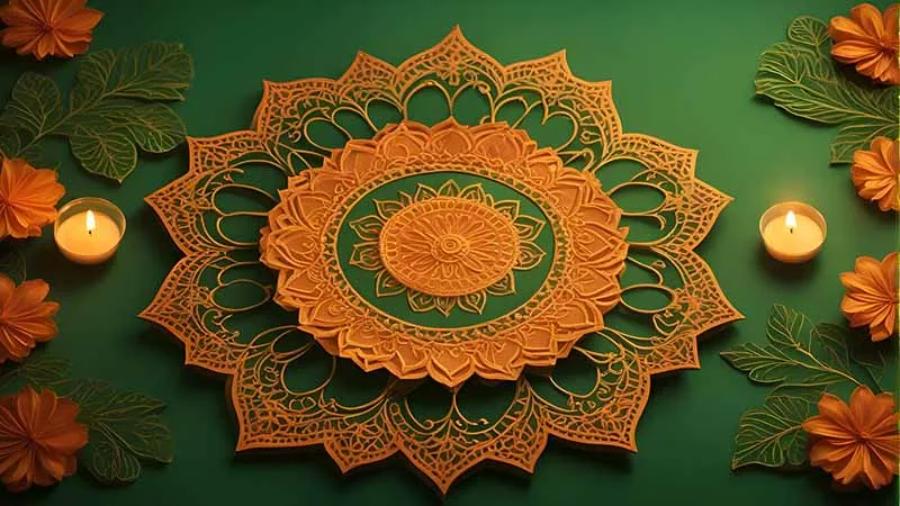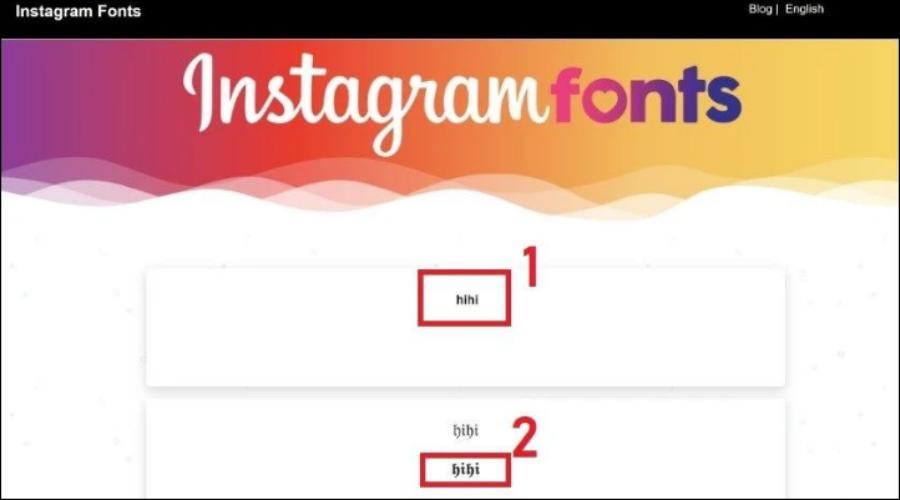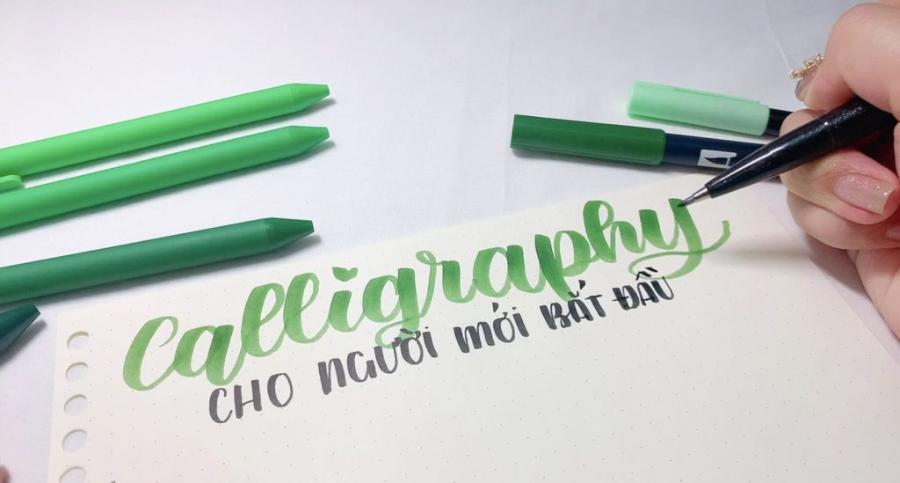Best Selling Products
Mandala: Spiritual Symbol and Modern Visual Language
Nội dung
- 1. What is a Mandala? The Roots of a Cosmic Symbol
- 2. The Structure of the Mandala: Art in Geometry
- 3. The appeal of Mandala in modern design
- 3.1. Mandala in graphic design
- 3.2. Mandala in fashion design
- 3.3. Mandala in interior design
- 3.4 Product design
- 3.5 Architectural and landscape design
- 4. Mandala and Experience Design: Applications in UI/UX
- 5. Symbolic meaning: Mandala in branding
- 6. Notes when using Mandala in design
- 7. Mandala – a bridge between people and healing design
- 8. The Future of Mandala in Contemporary Design
- 9. Conclusion
Take a deep dive into the Mandala and how this symbol is used in modern design. From its spiritual meaning to its aesthetic value, the Mandala is a rich source of inspiration for artists and designers.

Mandala – a sacred symbol that has appeared in religious ceremonies, is increasingly becoming an endless source of inspiration in the modern design world. With its symmetrical structure and profound meaning, Mandala not only helps convey messages but also evokes emotions in each design product. In this article, sadesign will take you to explore the journey of Mandala from ancient culture to its application in contemporary visual arts.
1. What is a Mandala? The Roots of a Cosmic Symbol
Mandala comes from Sanskrit, meaning “circle” or “sacred center”. In Hindu and Buddhist cultures, Mandala is seen as a symbolic map of the universe, where humans and gods connect in sacred space.
.jpg)
Buy Cheap Licensed Software
In the contemporary art and design scene, the Mandala is admired not only for its visual beauty but also for its philosophical significance and ability to evoke emotions. The perfect balance, attractive symmetry and intricate patterns of the Mandala provide endless inspiration for designers in many different fields. From brand logos to decorative motifs, from interior design to fashion, the Mandala’s mark is becoming more and more evident.
A deep understanding of the structure, meaning and basic principles of Mandala is extremely important for designers. It not only helps them create aesthetic products but also conveys deep spiritual and cultural values, bringing more meaningful experiences to users. The geometric structure of Mandala is usually a large circle surrounding small circles or squares inside. All revolve around a central point - a symbol of origin, awakening, or the human being itself. Each drawn detail carries a message of balance, unity and completion.
More than just a decorative image, Mandalas are a meditation tool that helps the viewer focus their mind, connect with their inner depths, and re-establish spiritual order. That is why Mandalas often appear in rituals, paintings, and religious architecture.
2. The Structure of the Mandala: Art in Geometry
Mandalas are not random arrangements of shapes. Each pattern follows a certain principle of geometric symmetry. The structure of a Mandala usually follows a certain pattern, each element has its own symbolic meaning:
Center (Bindu): The small point at the center of the Mandala is called the “Bindu”. It symbolizes the beginning of the universe, the source of all existence, and infinite potential. In design, Bindu can be understood as the focal point, the most important element that attracts attention.
Basic geometric shapes:
Circle: Symbol of perfection, infinity, and the cycle of life. It represents unity and wholeness. In design, circles convey a sense of harmony, softness, and envelopment.
Square: Often surrounding a central circle, it represents the physical world, stability, and order. The four sides of a square can represent the four directions, the four elements, or the four aspects of psychology. In design, squares convey a sense of solidity, reliability, and structure.
Triangles: Can point upwards (symbol of rising, aspiration) or downwards (symbol of falling, feminine energy). Combinations of triangles create complex and dynamic patterns. In design, triangles convey a sense of movement, energy and sharpness.
Repetition and Symmetry: These are two core principles that create harmony and balance in a Mandala. The repetition of patterns and shapes creates a pleasing visual rhythm, while symmetry brings a sense of stability and order. Designers often use these principles to create attractive and balanced decorative patterns.
Colors in Mandala: Each color in Mandala has a different symbolic meaning and psychological impact. For example:
Red: Energy, passion, strength, life.
Blue: Peace, tranquility, truth, intuition.
Gold: Wisdom, enlightenment, joy, prosperity.
Green: Healing, growth, hope, nature.
Purple: Spirituality, transformation, intuition, mystery. Careful color selection can convey specific messages and emotions in a design.
Common motifs and symbols:
Lotus: Symbol of purity, love, compassion and rebirth. The fully bloomed lotus petals represent the opening of the mind.
Deities and Bodhisattvas: Represent different qualities and energies in the universe and soul.
Animals: Carry different symbolic meanings depending on the animal and culture.
Abstract patterns: Lines, spirals, and other complex geometric shapes can carry personal or cultural meanings.
The symmetrical, regular structure creates a sense of harmony and relaxation. When combined with color and decorative details, the Mandala becomes a living entity, both decorative and conveying deep meaning.
3. The appeal of Mandala in modern design
In a society that increasingly values individuality and spiritual values, Mandala is quickly embraced by contemporary designers as a symbol that can harmonize art, culture and spirituality.
.jpg)
3.1. Mandala in graphic design
Mandalas have become a staple in design publications such as posters, book covers, logos and digital interfaces. With its easy-to-customize yet harmonious properties, Mandalas can be layered, rotated or combined with modern materials such as vector geometry, 3D techniques, color gradients…
Many brands also use Mandala in their branding to convey a message of balance, calmness, and introspection – especially brands related to health, yoga, meditation, and beauty.
Logos and Brand Identity: A logo designed based on the Mandala structure can create a unique, balanced and spiritual mark. It can convey the unity, integrity or growth of the brand.
Decorative motifs: Mandala motifs are widely used in printing (posters, invitations), product packaging (creating attraction and a high-end feel), and web design (backgrounds, icons, decorative elements that create accents and relaxation).
User Interface (UI/UX) Design: Mandala elements can be used subtly to create focus for the user, guide the eye, and provide a sense of relaxation during interaction.
3.2. Mandala in fashion design
In fashion, Mandalas appear on fabrics, accessories, tattoos and hand embroidery. Their intricate details and spiritual symbolism make them a distinctive aesthetic element, making products highly handmade and personalized.
Boho, Ethnic or Hippie fashion brands often choose Mandala patterns to express freedom and liberty in style. In addition, high-end designers have also begun to exploit Mandala as a point of intersection between tradition and contemporary.
Clothing Patterns: Mandala patterns are printed, embroidered or woven onto clothing, from everyday wear to high-end designs, expressing strong personality, sophistication and sometimes a little spirituality.
Accessories: Jewelry, scarves, handbags with Mandala details create unique accents and carry symbolic meaning.
3.3. Mandala in interior design
Zen or Bohemian style living spaces often use Mandala as a highlight. From wall hangings, floor rugs, curtains to handmade decorative motifs – all can integrate Mandala to create relaxation and balance in the living environment.
Soft light, natural materials, combined with Mandala help the space become deep, close to nature and evoke inner connection.
Wall Art and Decor: Mandalas are a great choice for wall art, bringing balance, harmony, and a meditative atmosphere. Decor items such as rugs, throw pillows, and ceramics with Mandala motifs also add a unique artistic touch.
Fabric and furniture patterns: Mandala patterns can be printed or embroidered on upholstery, curtains, and other decorative items, creating a colorful and personalized living space.
Spatial Layout: The Mandala's principles of symmetry and balance can be applied to the overall layout of a room or area, creating harmony and positive energy flow.
3.4 Product design
Handicrafts: Mandalas are an endless source of inspiration for handicrafts such as pottery, woodwork, and other works of art, honoring the traditional values and skills of the artisan.
Meditation Products: Yoga mats, meditation cushions, and meditation space decor items often use Mandala motifs to enhance concentration and a sense of peace.
3.5 Architectural and landscape design
Overall layout: In some architectural and landscape design works, especially spiritual spaces or resorts, the overall layout can be inspired by Mandala to create balance and harmony with nature.
Decorative Details: Mandala elements can be incorporated into decorative details such as windows, arches, floors, and sculptures, bringing a spiritual and artistic element to the space.
4. Mandala and Experience Design: Applications in UI/UX
Mandalas are not just limited to visual art but also extend their influence to user experience (UX) design.
.jpg)
When designing an app or website interface, a symmetrical, center-centered layout, like a Mandala structure, makes it easy for users to navigate and navigate. By dividing the screen into concentric circles, designers can prioritize content from the center outward. This is especially effective in apps related to meditation, spiritual care, or education.
The colors and shapes of Mandala also help reduce stress, enhance visual experience, and bring a friendly and pleasant feeling.
5. Symbolic meaning: Mandala in branding
The Mandala symbol in branding has a deep and multi-dimensional meaning, representing balance, harmony and comprehensiveness. Mandala is often used to convey the message of connection between humans, the universe and spiritual values. In the context of branding, Mandala is not only an aesthetic element but also a symbol of stability, creativity and sustainability. Applying Mandala in branding design helps create a sense of closeness, attraction and affirm the core values of the business, while leaving a deep impression in the minds of customers.
Mandalas don’t have to be original. A subtle blend of traditional and modern elements will help brands create a distinct identity without losing their iconicity.
6. Notes when using Mandala in design
Mandala is a highly artistic design element, often used to create accents and convey deep meanings in design products. Although it has high aesthetic value, Mandala is a sacred spiritual symbol, so its use in design requires caution and cultural understanding:
Avoid stereotypes or misuse : Mandalas should not be just “pretty” elements. Ignorance of usage can be offensive or misrepresent the message.
Respecting the original culture : If the design is international or has cross-cultural elements, careful research is needed to avoid violating spiritual values in Buddhist and Hindu cultures.
Flexible coordination with modern elements : To avoid being "outdated" or too complicated, Mandala should be combined with a minimalist, modern style in details or materials.
In addition, choosing colors and shapes that match the message or theme of the project is extremely important to create an aesthetic effect and convey meaning optimally. In particular, it is necessary to avoid overusing Mandala in the design, as this can lose focus and cause confusion for the viewer. Finally, it is necessary to consider the cultural factors and origins of Mandala to use it respectfully and appropriately.
7. Mandala – a bridge between people and healing design
In an industrialized world where people are constantly driven by speed and efficiency, Mandala offers a contrasting concept – a design of stillness, connection and recovery. More than just a “pretty drawing”, Mandala is a material for design that touches the emotions, helps the viewer heal and understand themselves.
.jpg)
Art therapists have been using Mandalas in psychological treatment, helping patients draw their emotions in a safe and creative way. From here, designers have also learned how to make designs more humane, more connected to the user's deep spiritual needs.
8. The Future of Mandala in Contemporary Design
While design trends continue to change, the core values of the Mandala – balance, symmetry, and intrinsic depth – remain unchanged. Rather than a passing fad, the Mandala is slowly redefining modern visual language.
From AI technology, data-driven creative design, to immersive experiences in virtual space (VR/AR), Mandalas can be “translated” into dynamic geometric patterns, automatically generated according to the user’s mood, behavior or desire. This opens up huge potential for the future of personalized design, where each Mandala is an individual reflection of the user.
Buy Cheap Licensed Software
9. Conclusion
Mandala is a symbol of timeless beauty – a fusion of order and creativity, spirituality and aesthetics. In the world of modern design, Mandala is no longer a purely religious image but has become a profound tool of expression for creative thinking, human values and emotional experiences. With the skillful combination of geometry, color and symbolism, Mandala brings new life to the design language. Whether applied in graphics, fashion or user experience, Mandala always retains its essence – connecting, healing and shaping the ego through subtle and profound beauty.












































